


Þráinn Hjálmarsson, composer
About: "Thranophone" is an electro-acoustic musical instrument, which uses positive feedback [Larsen effect] to amplify the formant-peaks of complex/simple shaped cavities. It's sonic material and possibilites of pitches derives from the resonance frequencies of cavities.
Artistic motivation: What is linked closely to instrument making is the Invention of a performer, a performer that has his viewpoint from the restrains and possibilites of his own instrument. The main drive behind this exploration of instrument making is this thought of restrains in performance and in compositional possibilites.
This instrument has a special place within the musical instrument history where it uses the resonating body of the instrument not as for amplification [as in other musical instrument] of the sound, but rather the interface and sound production part of the instrument, where this resonating cavity controls what pitches are to sound and become a part of the interface of the insturmen
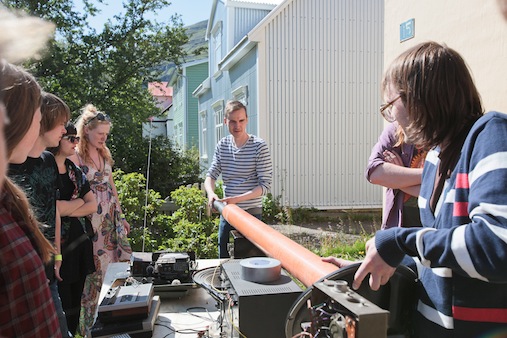
About Thranophone #1: The most simple version of the instrument, where a normal cylindrical tube is used as a resonating object. Sounding results is a fundamental pitch defined by the length of the tube. The pitch can be varied by lengthening or shortening the tube, the shorter the tube, the higher the fundamental pitch.
How it works: By producing a normal "larsen effect" with a standard PA-system, [PA-system feedback] it amplifies the most resonant frequency of the cavity, forcing it to sound.
Cylindrical resonance objects: The fundamental frequency of a cylindrical tube is defined by the lenght of the tube. The fundamental frequency will become the most dominant frequency of the feedback where it's frequency is the strongest in resonance. The latter resonating frequencies of the cylindrical tube follow the Overtone-series and can be attained by using the equalizer on the mixer of the PA-system.
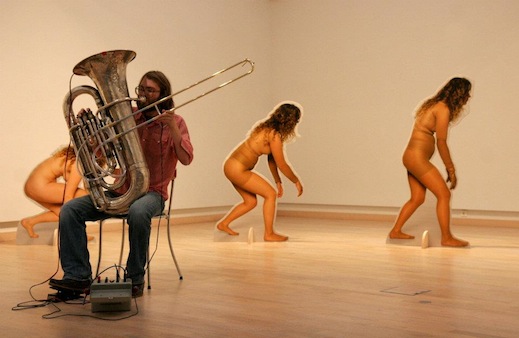
About: Positive feedback is led through known standard western instruments such as Tubas, Trombones, Euphonium. Microphone is placed inside the mouth of the performer to give the performer more and detailed control of the feedback.
Brass instruments as resonance objects: Where as Brass instruments behave in resonance as cylindrical tube, the principles of overtone series occur within the cavity. The length of the cavity can be shortened or lenghtened easily by the valve-system of the brass instrument. Altering the fundamental of the feedback.
The use of mouth cavity as a "filter": Where the microphone is placed inside the mouth of the performer, the mouth works as a filter which is used in focusing the sound to other resonating frequencies in the cavity. Works similar as before to Thranophone #1 where equalizer on the mixer is used to change between frequencies, but the controls are much more detailed than handling it through a mixer.
Addressing the performer: This technique addresses the performance practice of brass-instrumentalists – but the performer needs some excercies and practice in the use of the mouth cavity, to being able to alter pitches of the instrument precisely.
Halldór Úlfarsson designed a "speaker-mute" for Ingi's altered tuba (Dónatúban) where the placement of the speaker was fixed inside the bell.
In the summer of 2011 the idea was to custom build an resonant object for the instrument. In the summer of 2011 the idea was to custom-build a resonant object for the instrument. The aim with this was to alter the pitch possibilities of the instrument, connecting forms of space to the musical instruments. The instrument would then use the same performance technique as of Thranophone #2, with the microphone in the mouth of the performer, but sounding results would differ where the shape of the cavity offers different types of pitches.
About: The process since 2011, has been researching how it is possible to succeed in custom building frequency response of cavities. In short, the main goal is to make cavity which do not follow the principles of overtone series, that is, the connection between the resonating frequencies are not in harmonic relation.
Great contribution to this project so far has come from Halldór Úlfarsson, visual artist
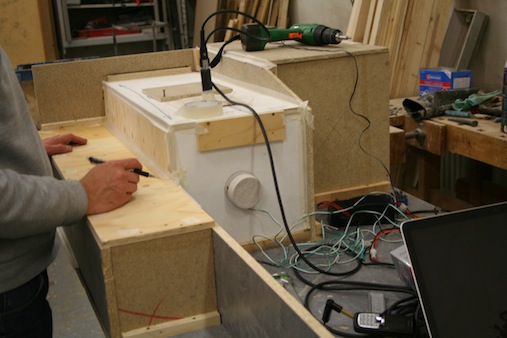
About: Bold experiment where cubical objects were fused together with the possibility of separating the boxes. Trying out if it was possible to measure each box seperate and try out when they were connected again, what would be the result of it. Looking for the difference of standing waves between the walls of the cubicals versus the resonance determined by volume of air that is placed inside the cavity. The use of simple forms such as box derives from the knowledge that simple forms have high amount of Q at their resonance frequencies.
Aim: Was to make one resonant object that had clear responce frequencies with high Q at the Formant peaks. Hence the square like shapes used in this project, simple shaped cavity should result in frequency response with high Q.
Results from this research stage: The behaviour of the frequency was a bit too unclear but it is curious how the behavior of the box is different from what corner or side the microphones and speakers are put, and showed clearly that what needs to be done in the later Thranophone development is that the large cavity must be 'linear' in that way that the feedback can only have one direction through the cavity.
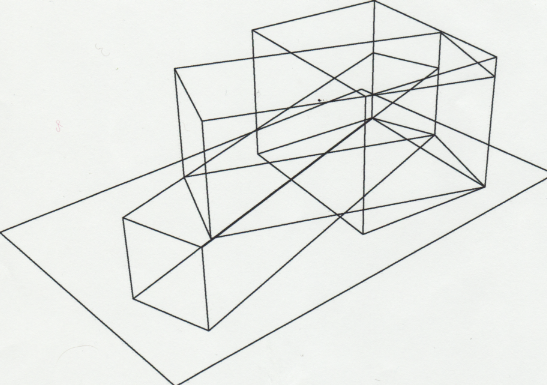
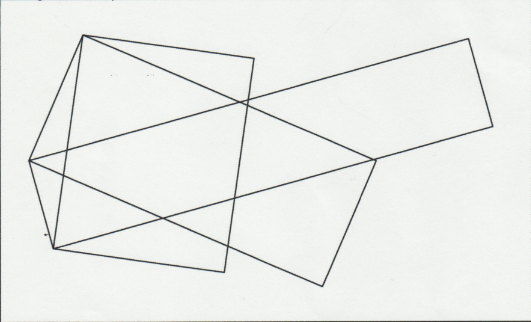
Sketch made during the first steps of the research

About: This step in the research revealed the possibility of using 2 different cavities posing them to each other, to summarize a high amount of Q on a frequency. From the previous try-outs, it is more easily done to add filters onto each other, than to shape one cavity as wanted. It results in further possibilites and use of each cavity if the cavities are separated.
Setup: Layout of the future instrument is to depart the instruments into 2 separated filters, self-included filter would be tha favor of the microphone feedback.
Results: The design of the cavity can be less specific where it comes to the amount of Q at each resonant peak, where a change of a mouthpiece can make the instrument more flexible in use and use the cavity in more possibilities.
Collaborators: Halldór Úlfarsson and Þráinn Hjálmarsson
About [in short]: Acoustic filter that has it's own formant-peaks, custom made. Theoretically based on a vowel resonator. With the help of a JAVA program made by Paul Falstad [available online] – http://www.falstad.com/
About: From the process of making the 'Synthetic Thranophone' [seen above] it occured that it was possible to use two 'filters' to mould the frequency response in a wanted way, first was the tryout of making a filter on the 'mouth-end' of the instrument, hence the Thranophone-formant. Frequency response of this Formant can then be added to another frequency response of 1) Mic, speaker, amplification responce and 2) the response of the cavity that the speaker is in.
Material: Plaster, from 3D printout
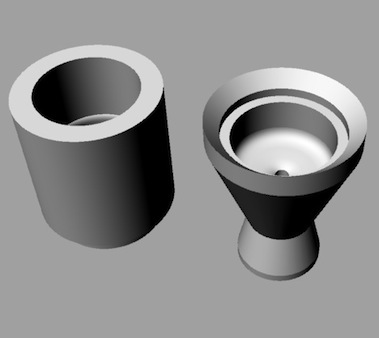
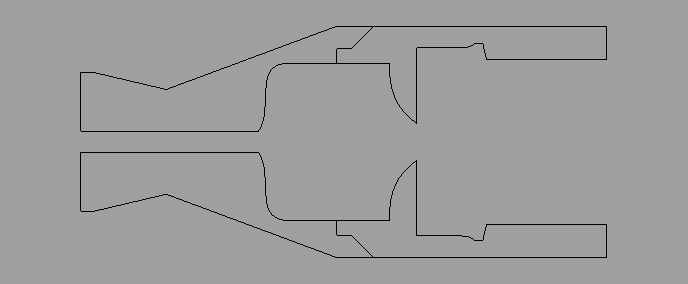
Collaborators: Halldór Úlfarsson and Þráinn Hjálmarsson
About: Modular edition of the previous Thranophone-formant, where it's easier to try out different setups of the formant. Can be arranged into various positions that has their various formant-peaks in the resonance. The results from the Measurment [seen to the right] showed that this approach is more direct than the previous 'Thranophone-formant [v.1]
Material: Lazer-cut acrylic – in shapes with circles with 1, 2, 3, 4, 5, and 5.6 cm in diameter.
Results from Measurements: Results from the measurement showed that this technique is usable for this project, the measurements should though made better in terms of seeing further if there is too much change between what the program of Paul Falstad's predict and the product.
Results from a seminar with the Formant: From a dialogue with the instrumentalist Ingi Garðar Erlendsson on his altered Tuba. It showed that the Formant forced the feedback on clear resonance-peaks of the formant, allowing Ingi not to play those frequencies that the Formant did not favor but the larger cavity did. This technique is therefore usable as a for the instrument.
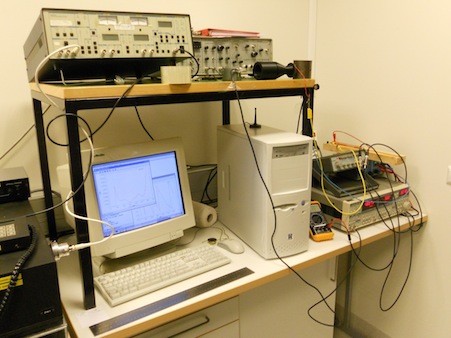
About: From the prediction of the JAVA program used to make the 'Thranophone-formant' on how the shape of the instrument forms the frequency response, the measurement was meant to try out if the prediction was correct and this technique would be usable as one module of the instrument.
Results: The results from the measurement were positive and it showed that this approach is usable for the development of the instrument, the frequency response prediction was similar to the measurement, but these measurements were just a rough image of the frequency response. It showed as well, that the 'Formant [v.2]' was more accurate and will be used from now on instead of the printed out formant.
Thanks:The measurements took place at University of Iceland 9th and 12th of March 2012, with great help of Ari Ólafsson and Marian Shiarov
About: Tryouts with Ingi's instrument and the Thranophone-formant - in the tryouts just using one length of tube in the Tuba and using the mouth to vary pitches.
Explanation:The Formant has a high amount of Q on fixed frequencies, so it is easier to hit the precise notes. The formant filters frequencies of the Tuba instrument.
Results: The prediction of the program and the usage works, the formant prevented use of some resonance frequencies of the Tuba, only allowing it fixed high tones and some low tones.
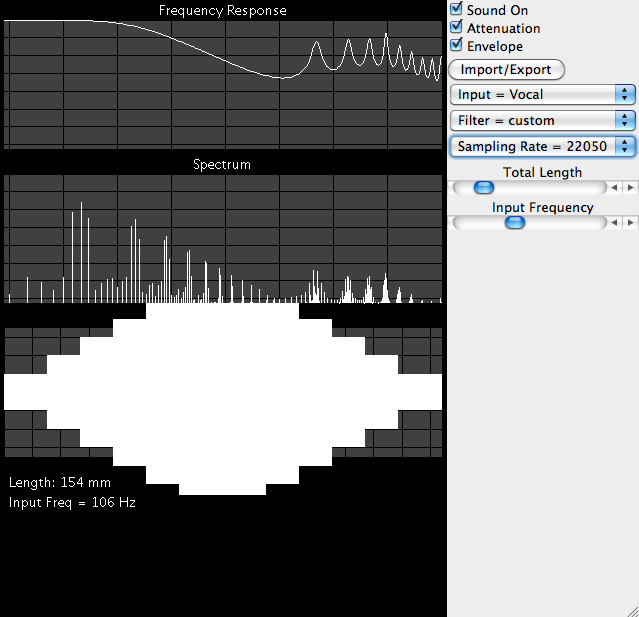
Layout of the tested formant
As a conclusion to the research so far, the next steps in the research is to do further and more precise measures of the 'Thranophone-formant' and as well the making of the 'Thranophone-body', which is the larger cavity, replacing the Tube/Brass-instrument cavitiy of the Thranophones. As well a further interface design with the formants and some computer programming.
Resonance bodies - Making complex cavity where the cavity favors a large range of frequencies.
Software - adapting Paul Falstad's program, where it is possible to insert measurements of Resonance of 'Thranophone-body' and to see the outcome of the combination of the 'Formant system' and 'Thranophone-body'.
Designing a mouth piece - synthesizing more than 1 Thranophone-formant – [INTERFACE]
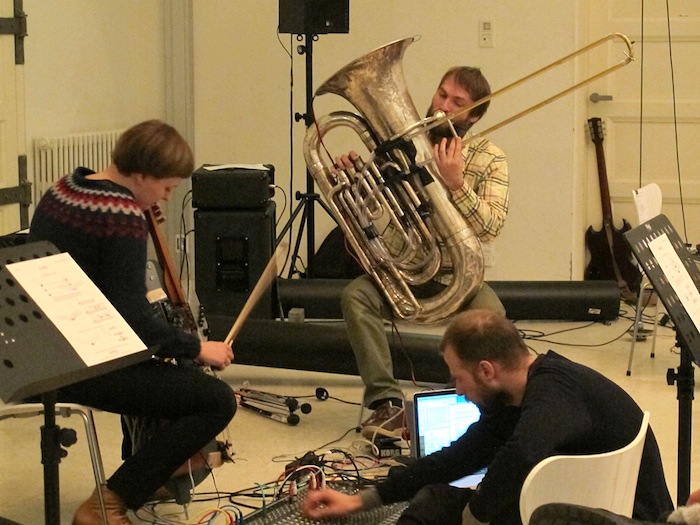
Concert held in collaboration with Jaðarber - concert series where the instrument is put in context to music from the 20th century and as well with music that includes the instrument. The concert took place at Reykjavík Art Museum - Hafnarhús, 27th of February 2013 at 20.
Program:
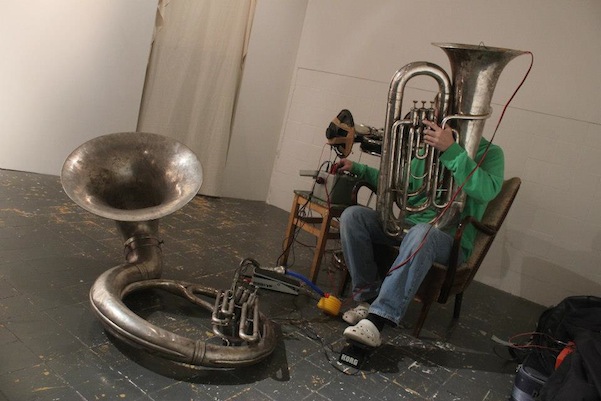
Excerpt from a solo recital by Ingi Garðar Erlendsson at concert venue Mengi, Óðinsgata 2, 101 Reykjavík, 15th of November 2014. Ingi Garðar played on Thranophone #2 with Tuba as a resonance cavity.
Úsland recording label has released the album ÚÚ #7, an album made in a recording session on the 7th of April 2013, with the musicians Curver Thoroddsen, electronics, Ilan Volkov, violin and more, Ingi Garðar Erlendsson, Thranophone and Óttar Sæmundssen, double bass.
The album is available on bandcamp here.
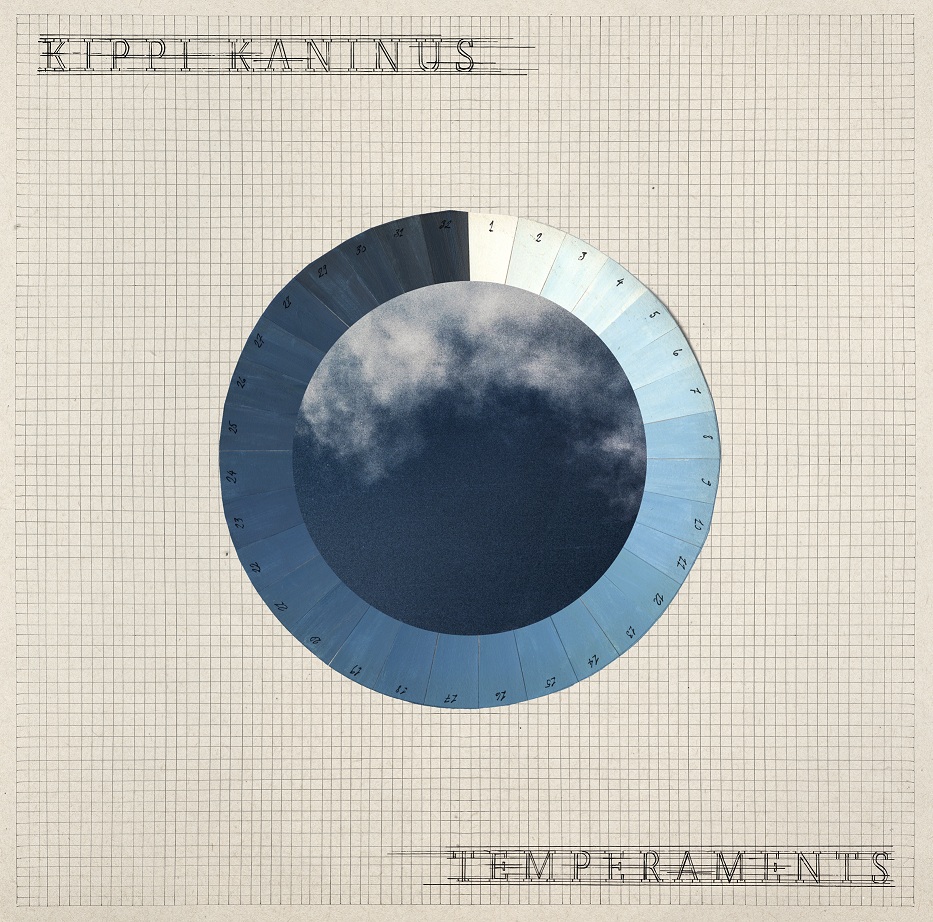
Ingi Garðar Erlendsson performs on Thranophone #2 on the album of Kippi Kaninus, Temperaments, released by Mengi in 2014.
The album is available on vinyl and as a download through the webshop of Mengi here.
Soon to follow